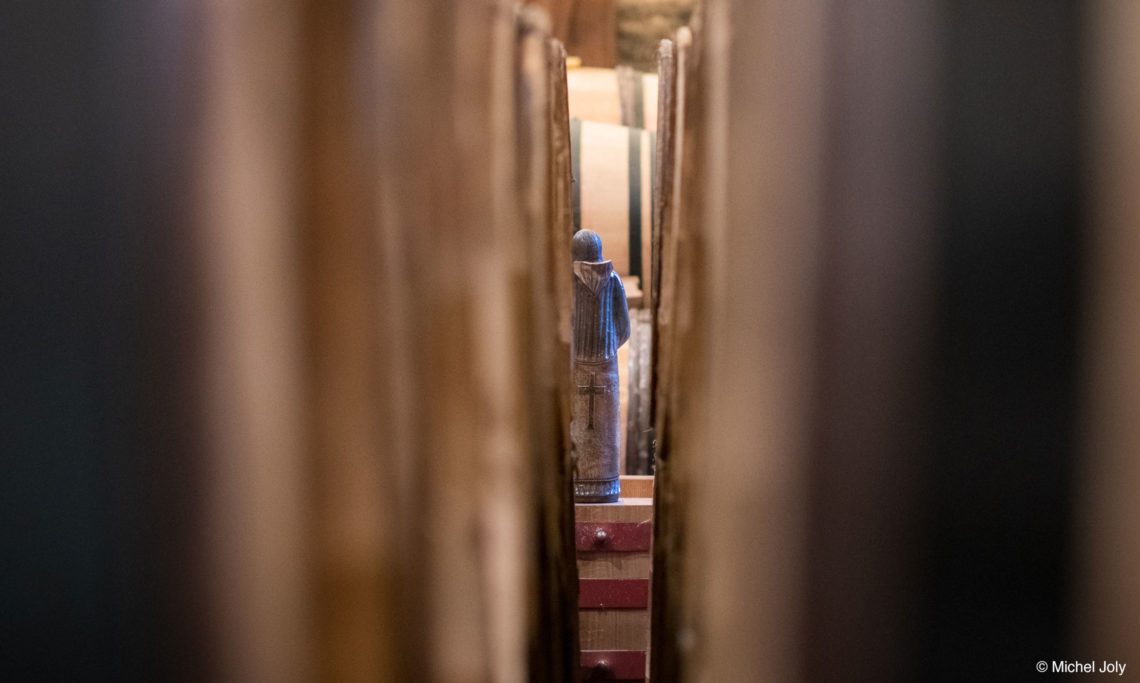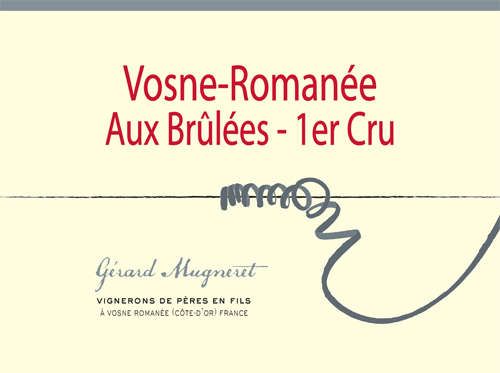Vosne-Romanée Aux Brulées 1er Cru
At a Glance
- Etymology: from the verb brûler, to burn. This is possibly a reference to the brushwood that existed in the combe, that had to be cleared to plant the vineyards. Or it could come from the feeling of heat at the location under a hot sun, especially in the parcels at the top of the slope that face full south and that are protected from the wind. (Source: Marie-Hélène Landrieu-Lussigny).
- Size: 0.27 ha (0.67 ac)
- Variety: Pinot Noir
- Vine Age: Planted in 1939 and 1944
- Terroir: Aux Brulées sits on both flanks of a combe with the particularity that almost half of the vineyard faces north and another almost-half faces south. (The unaccounted part faces east.) Pascal has two north-facing parcels. The soils are very shallow, approximately 20 cm deep, and sit over fractured bedrock. It is an incredibly difficult vineyard to plant posts in.
- Viticulture: Uncertified biodynamic
- Vinification: 60% whole cluster, ambient yeast ferment. Aged in oak barrels (25% new) for 12 to 18 months. Since 2016, very moderate sulfur additions: none during vinification, a little during élevage and before bottling, for a total of 15 to 20 ppm.
Additional Info
Given its diverse expositions, Aux Brulées can deliver very different experiences. The south-facing examples are considered to be more elegant and delicate, the north-facing examples more muscular. Usually, people tend to shy away from muscle. Not here. The vineyards of Méo-Camuzet—the domaine most Burgundy aficionados consider to be the standard bearer for this cru—face north. It is no minor wine in the domaine’s range; it is poured after three of the Grand Crus, just before Cros Parantoux and Richebourg. And just to milk this a little further, Méo is Pascal’s neighbour in Brulées. (We’re not completely shameless, we didn’t mention Henri Jayer.)
All this to say that north-facing Aux Brulées is an oddity in Burgundy. It is a very mineral wine, with tons of grip, and this character is even further reinforced by the coolness of its exposition and by cool air from the combe. In its youth, Brulées can be downright austere. This would normally make it more of a wine for the natives than the public. Thankfully, some very famous domaines have made it a hit. It deserves its popularity. It’s like sipping on stones and cold air and it ages incredibly well.
Wines
-
Red
- Pourpre VDF
- Bourgogne Pinot Noir
- Bourgogne Les Rouges Champs
- Vosne Romanée Quatrain
- Vosne Romanée Vigneux
- Vosne-Romanée Cuvée Précolombière
- Savigny-les-Beaune Aux Gravains 1er Cru
- Chambolle-Musigny Les Charmes 1er Cru
- Vosne-Romanée Les Suchots 1er Cru
- Vosne-Romanée Aux Brulées 1er Cru
- Nuits-Saint-Georges Aux Cras 1er Cru
- Nuits-Saint-Georges La Richemone 1er Cru
- Echezeaux Grand Cru


